#john jelfs
Text
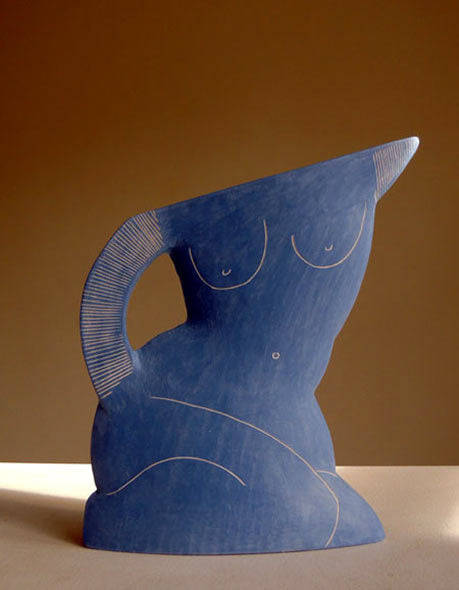


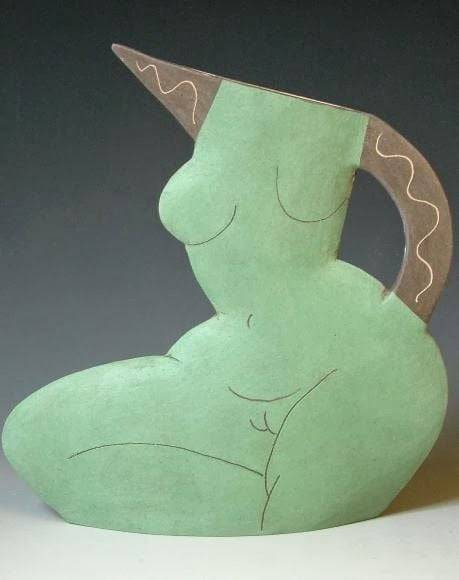

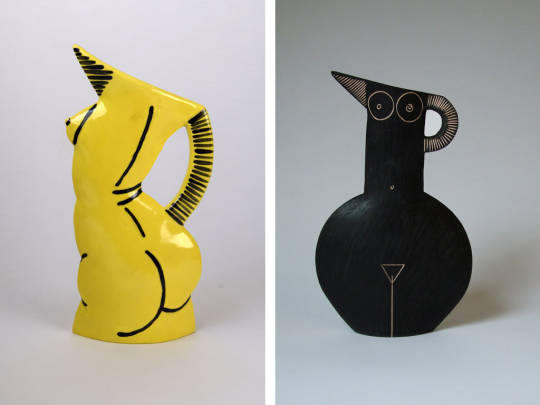
Ceramic artist Jude Jelfs (UK)
Jelfs studied painting and sculpture at Gloucestershire College in England, and began making functional objects in the 1970s after meeting her husband, John, with whom she runs a studio, The Cotswold Pottery, in an enchanting English village called Bourton-on-the-Water. Made of white earthenware clay (and sometimes porcelain or bronze), Jelfs’s figurative wares—which evoke the work of Alberto Giacometti, Pablo Picasso, and, perhaps most vividly, Henri Matisse—take the form of causally arched nude women. “What I hope to achieve are drawings in space that have a three-dimensional element to them,” Jelfs told me in an email. “There’s always been anthropomorphism in pottery,” she continued (the “belly” of a jug, the “neck of a vase, the “foot” of a bowl), so referencing the human body in a pottery jug is a logical progression—albeit a playful one.
https://www.surfacemag.com/.../jude-jelfs-pottery-nude.../
75 notes
·
View notes
Photo

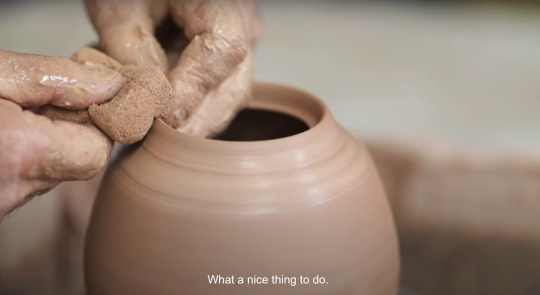

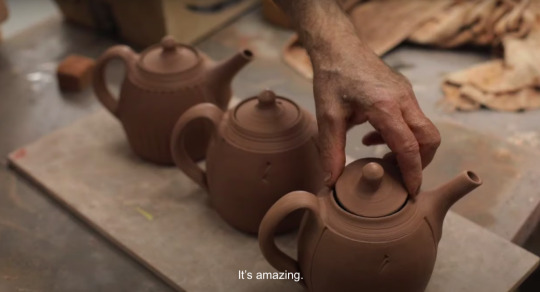
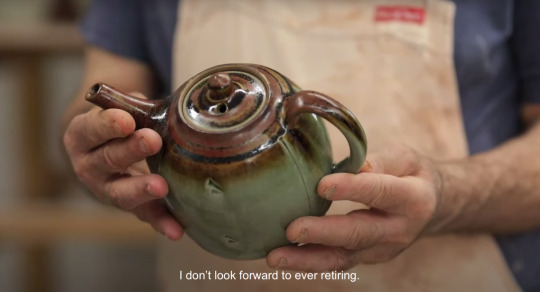
ceramic review: masterclass with john jelfs
#OOOOHHHHHHHHH i love this so much. cries#j#also ik the font is a little small.. sorry ):#pottery#ceramics#john jelfs#teapot
42K notes
·
View notes
Text
Let’s establish two things up-front about J.R.R. Tolkien the creator of ‘The Hobbit’ and the ‘Lord of the Rings’ trilogy, firstly he was a South African and secondly, he was a soldier. His formative years and war experience are the backdrop to the creative mind that produced the legendary sentence “In a hole in the ground there lived a hobbit” a mind that unleashed the worlds of Middle Earth, Mordor, Frodo Baggins, Sam Gamgee, Gandalf the Grey, Dragons, Mining Dwarves and not forgetting our ‘precious’ Gollum on us.
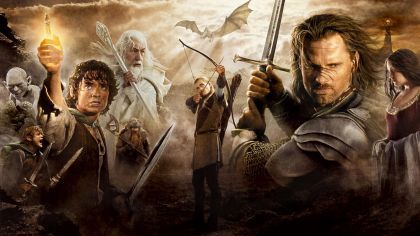
A ‘South African’
It’s seldom acknowledged, even in the country of his birth, that Tolkien was born in South Africa (technically however, he was born in the Orange Free State Republic). Tolkien was born John Ronald Reuel (J.R.R.) Tolkien in Bloemfontein on the 3 January 1892. His father, Arthur Reuel Tolkien was a bank manager, his parents left England when Arthur was promoted to head the Bloemfontein office of a British bank called The Bank of Africa which involved itself primarily in financing diamond and gold mining.
The reason for the move to the ‘colonies’ with The Bank of Africa was that it enabled Arthur to marry Mabel Suffield and support a family. So, before he was born, J.R.R Tolkein’s Mum and Dad were married in the Cathedral Church of St George the Martyr in Cape Town in the Cape Colony on 16 April 1891 and then moved on to the Orange Free State Republic.
The couple eventually reached the capital of the Free State – Bloemfontein, after a 32-hour train journey, Mabel was not impressed by the place. “Owlin Wilderness!… Horrid Waste!” she wrote of Bloemfontein. The independent Boer Republic capital at the time had a population of 3500, it was windy, dusty and treeless – however on the up-side the nearby veld still contained abundant game.

A picture of Church Street (currently known as Oliver Tambo Road) Bloemfontein, circa 1900
John Ronald Reuel (J.R.R.) Tolkien was born at Bank House in Bloemfontein, he was later baptised in the Anglican Cathedral of St Andrew and St Michael, one of the oldest churches in Bloemfontein. His third name ‘Reuel’ sounded so unusual that the vicar misspelt it in the baptismal register. One of his godparents was George Edward Jelf, the Assistant Master at Bloemfontein’s now legendary boys school – St Andrew’s College.
Tolkien had one sibling, his younger brother, Hilary Arthur Reuel Tolkien, who was also born in Bloemfontein on 17 February 1894.
Generally, the harsh African climate did not sit well with Mabel and the scorching Bloemfontein summer followed by freezing winter did not appeal to her at all. She took the boys on a short holiday to the seaside in the Cape Colony in 1894 – a holiday which Tolkien himself remembered vividly and had very strong impressions of the landscape.
Shortly afterward the sea-side trip Mabel took the boys on another holiday to England. Tolkien’s father was heavily engaged in work and was to join the family in England for the holiday later. The separation had a huge influence and Tolkien would later recall powerful separation anxiety; he recalled his father painting ‘A.R. Tolkien’ on their cabin trunk. Tolkien retained the trunk as a treasured in memory of his father.
They waited for their father to join them in Birmingham, but he never arrived. He had developed Rheumatic Fever in Bloemfontein and died from complications brought on by the illness. He was buried near the old Cathedral in Bloemfontein in what is now the President Brand Cemetery. For many years his grave was lost and was unmarked until in 1992 the Tolkien family was able to trace the grave and consecrate a new headstone.
With little to come back to Mabel decided not to return to South Africa and the young family settled in the hamlet of Sarehole near Birmingham
An African Influence
So how could South Africa possibly have influenced the wonderful mind of such a young J.R.R Tolkien having only spent 3 years there? People who study Tolkien (yup, there is a fraternity of Tolkienists who dedicate study to him and his books), point to a number of interesting instances which happened to him in South Africa which influenced his formative mind.
Firstly, he was kidnapped. Now that’s not common knowledge. An African male domestic helper in the Tolkien family employ named Isaak kidnapped baby Tolkien for a day to show him off to nearby villagers, Isaak had a great affinity to Tolkien and was immensely proud of the young lad – the family forgave him and funnily Isaak went on to name his first son Isaak Mister Tolkien Victor.
Secondly, he was bitten by a poisonous spider. Some sources point to a baboon spider and others point to a tarantula as the culprit who bit him on the foot when he was a toddler learning to walk, either way, very luckily, a quick-witted family nurse sucked the poison out.
Tolkien himself later said he had no real fear of spiders, however Tolkienist researchers claimed that this experience prompted Tolkien’s evil spirits in the form of huge venomous arachnids. In the Hobbit and The Lord of the Rings we read of battles with the horrifying giant Spiders, Shelob and Ungoliant. When asked to comment on this theory, Tokien himself didn’t confirm or deny it, saying only that the researchers were “welcome to the notion”.
Thirdly, and this is the most significant influence South Africa made on Tolkien is his future love of languages – a love which led him to imagine entirely new invented languages – there is hardly a hard core Hobbit fan out there who is not swept away with the Elvin language. Of this influence there is no denial and the language which did it – Afrikaans. Yup, believe it.
Tolkien’s father learned to speak a little ‘Dutch’ in his local dealings and Mabel interacted with local Bloemfontein residents – English and Afrikaners alike. She even performed in amateur plays staged by the Fischers and the Fichardts, two of the most prominent Free State families.
In one of the earliest photographs of J.R.R. Tolkien he can be seen with in the arms of his Afrikaner nurse. He was also surrounded by servants all of whom spoke Afrikaans. His nurse taught him some of her language and phases and Tolkien would later say of himself – “My cradle-tongue was English with a dashing of Afrikaans”.

Photograph of the Tolkien family in Bloemfontein, November, 1892 with J.R.R in the hands of his nurse
Tolkien would develop his love for new languages and later studied Latin and Greek. He went on to get his first-class degree at Exeter College, specialising in Anglo-Saxon and Germanic languages and classic literature.
In The Lord of the Rings and The Hobbit, he invented an entirely new language for his elves, Quenya – also known as Qenya or High-Elven, with its grammar rooted in Germanic languages, Greek and Latin. Tolkien compiled the “Qenya Lexicon”, his first list of Elvish words, in 1915 at the age of 23, and continued to refine the language throughout his life.
Ah, but he was just ‘too young’ for South Africa to have any influence whatsoever would be the chorus of the sceptical readers of this article, he was only 3 years old when he left – not so, we are dealing with a brilliant mind and consider this, by the time he was 4 years old Tolkien could read and he could write fluently very soon afterwards.
Back in England tragedy was to strike the Tolkin boys again, when their mother Mabel also died in 1904, and the Tolkien brothers were sent to live with a relative and in boarding homes, with a Catholic priest assuming guardianship in Birmingham.
Tolkien had a highly imaginative upbringing in England and by October 1911 he began studying at Excreter Collage at Oxford University. He initially started with classics but switched to Languages and Literature, graduating in 1915 with first-class honours.
World War 1
Being a soldier is one of Tolkien’s biggest influences and of that there is little doubt, war awoke in Tolkien a taste for a fairy story which reflected the extremes of light and darkness, good and evil which he saw around him, especially when you consider the battles he took part in and witnessed.
World War 1 broke out whilst Tolkien was at university. He elected not to join until he finished his degree. Upon graduating Tolkien immediately found himself in the British Army in July 1915, volunteering to join up. Aged 22 ,he joined the 11th Lancashire Fusilliers and studied signalling, emerging as a 2nd Lieutenant, he married whilst in the Army in March 1916 and in short time, by June was ordered to go to France to take part in the Battle of the Somme, at the time he said of the order “It was like a death,”
The Battle of Somme in 1916 was singularly the biggest bloodletting of World War 1 as one million men (get your head around that) on both sides were either killed or wounded as the British advanced a front along the Somme river for only 7 miles. The Battle of the Somme is no doubt the background to Tolkien’s future Middle Earth – Mordor (the Black Land and Quenya Land of Shadow) and the realm and base of the arch-villain Sauron.

Battle of Albert. Roll call of the 1st Battalion, Lancashire Fusiliers in a communications trench. IWM image copyright
Fortunately for Tolkien he was spared from the first Somme assault (unlike many of his university educated officer class friends and colleagues who were mowed down), the 11th Lancashire Fusiliers were held in Reserve. When sent ‘over the top’ the 11th Lancashire Fusiliers helped capture the German stronghold at Ovillers two weeks later.
Tolkien was appointed the battalion signalling officer and spent the next three months in and out of trenches. The biggest inspiration for Tolkien’s future The Lord of Rings lies in his respect for the ordinary British infantryman under such intense adversary, these infantrymen would later be the bedrock for Tolkien’s loyal, brave and resilient hobbit – Samwise Gamgee.

Wiring party of the 1st Battalion, Lancashire Fusiliers going up to the trenches. Beaumont Hamel, July 1916. IWM copyright
In late October, after seizing a key German trench, the Fusiliers were sent on to Ypres. But Tolkien was ‘lucky’ to be spared the slaughter in Belgium, a tiny louse bite gave him trench fever, so he landed up in a Birmingham hospital and here he started writing about mechanistic dragons, inspired by the invention of the military tank in warfare and formulating Mordor in his mind instead.
Tolkien spent the rest of the war in and out of hospital and training troops in Staffordshire and Yorkshire. Here in 1917, whilst walking in the woods with his wife he was inspired to write the love story of the fugitive warrior Beren and the elven-fair Lúthien.
In all Tolkien summed up war in the trenches as “animal horror” and he was not far wrong.
More South African twists and turns
After the war ended in November 1918 the lure of South Africa endured and Tolkien in 1920 applied for a professorship of English Literature at the University of Cape Town (UCT), and was to be sponsored by De Beers Mining consortium, His application was approved, but, in the end, he had to decline the offer for family reasons and retained his post as reader at the University of Leeds and was later appointed professor at Oxford.
Tolkien settled in to write the Hobbit and Lord of the Rings Trilogy, however war (and South Africa) was never to really leave him. When World War 2 came about, his youngest son Christopher joined the Royal Air Force and, in 1944 he was dispatched to South Africa to train in Kroonstad (also in the Orange Free State) to train as a fighter pilot and he was later moved to Standerton.

Christopher Tolkien (marked with X) training in South Africa 1944
J.R.R. Tolkien resumed his work on The Lord of the Rings and sent chapters from the future book to his son in South Africa, in a letter he told Christopher that he wished he could travel to South Africa – the country of his birth. He wrote of his curiosity in Africa and wrote to Christopher of the “curious sense of reminiscence about any stories of Africa, which always moves me deeply. Strange that you, my dearest, should have gone back there…’
To say that Christopher or his experiences did not have any influence on The Lord of the Rings, consider that after the war in 1950 he become a freelance tutor completing a B.Litt and worked very closely with his father through the creation of The Lord of the Rings and later works, and he was given the task of creating the original maps for the first edition of The Lord of the Rings.
The truth is, South Africa never really left J.R.R. Tolkien, he was native to it, intrinsically linked to his land of birth, ever wanting to return to it and it continued to have a deep influence on him all his life.
Legacy in South Africa
So where are we with remembering one of South Africa’s most successful authors of all time? The reading is grim I’m afraid. Apart from the generally Hobbit crazy Hogsback village and nature park in the Eastern Cape there is little else. Hogsback has used the Tolkien/South Africa link to an insane level naming just about everything in the nature park after something to do with The Lord of the Rings, but it’s an indirect link – there is no evidence that Tolkien never visited Hogsback. The biggest disappointment however is Bloemfontein where there is a direct link – he is after all one of their most famous ‘sons’ – and a very big tourist opportunity for the city.

Hogsback – Tolkien’s Middle Earth in the Amathole Mountains?
However, in Bloemfontein the Tolkien Society is now defunct, the municipality on Tolkien’s birth centenary mooted a Tolkien walk (to see places he grew up in etc) but that never really materialised. There is a plaque at the Church in which he was baptised, but that’s about it. Travel guides list Tolkien’s father’s grave as ‘too dangerous’ to visit. The brass plaque on commemorating his birthplace was stolen and never replaced.
In Conclusion
This general apathy to Tolkien in South Africa is best summed up UK journalists from the Mail and Guardian who made their way to Bloemfontein when Peter Jackson launched his epic movie trilogy of Lord of the Rings – they expected to get a scoop on South Africans embracing what is arguably one of their most famous author, if not the most famous. Instead they were surprised to learn that the average modern South Africa did not know Tolkien was a South African and here is the key part – when interviewed they felt that The Lord of the Rings was ‘European’ mythology and had nothing to do with African culture, so they deduce that was simply not a real African.
Therein lies the essence, South African education today simply dismiss anything with a ‘colonial’ heritage, including what is arguably one of the best-selling authors the entire world has ever seen. The truth is Tolkien was South African, his biggest influence was that of the World War 1, a war that South Africa also took part in, and in the Battle of the Somme his original ‘countrymen’ – South Africans were defending Deville Wood a little way down the Somme salient shoulder to shoulder with him.
The lack of adoption of a South African like Tolkien in his country of birth is a travesty to understanding history correctly, South Africa is made up of many cultural parts and all its history needs to be preserved, not just one or the other.
I for one hope this missive goes a little way to re-education, and as a fellow South African and military veteran I salute you John Ronald Reuel Tolkien.
Written and Researched by Peter Dickens
References: Tolkien’s War: Mordor Was Born in WW1 by Mark Shiffer, Tolkien Gateway on-line, J.R.R. Tolkien Biography by Biography.com Editors, South African History on-line. A plaque, a Hobbit hotel and a JRR Tolkien trail that’s petered out … David Smith, ‘Africa… always moves me deeply’: Tolkien in Bloemfontein by Boris Gorelik. Bloemfontein: On the trail of Tolkien by David Tabb.
A South African, Mordor and a Hobbit Let’s establish two things up-front about J.R.R. Tolkien the creator of ‘The Hobbit’ and the ‘Lord of the Rings’ trilogy, firstly he was a South African and secondly, he was a soldier.
2 notes
·
View notes
Photo

Friday, January 6th, 1899- The Buffalo Times
Two Ontario newsboys plead guilty to selling newspapers [from Buffalo, NY] on a Sunday, apparently in violation of a Buffalo blue law that forbids the sale of Buffalo newspapers on a Sunday. The judge seemed inclined to let the boys go, as he didn’t seem to feel they had made any offense.
People:
John Allan, newsboy
Lewis Montgomery, newsboy
Magistrate Jelfs
Places:
Hamilton, Ontario (where the violation occurred)
Buffalo, NY
#article: 1890s#article: 19th century#john allan#lewis montgomery#ontario newsboys#strike timeline: 1.6.1899#19th century#ref: newsies
1 note
·
View note
Photo
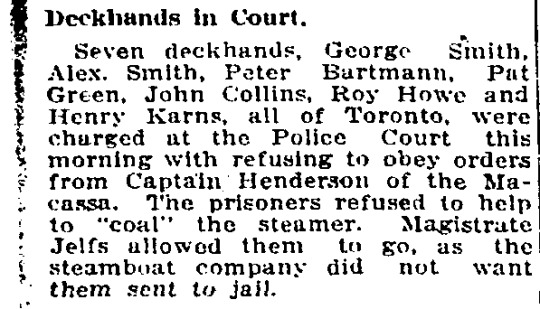
“Deckhands in Court,” Toronto Globe. November 22, 1911. Page 2.
----
Hamilton, November 21 - Seven deckhands, George Smith, Alex. Smith, Peter Bartmann, Pat Green, John Collins, Roy Howe and Henry Karns, all of Toronto, were charged at the Police Court this morning was refusing to obey orders from Captain Henderson of the Macassa. The prisoners refused to help to ‘coal’ the steamer. Magistrate Jelfs allowed them to go, as the steamboat company did not want them sent to jail.
#hamilton#deckhands#sailors#canadian sailors#work refusal#strike#steamer#coaling#refusal to work#police court#mutiny#crime and punishment in canada#history of crime and punishment in canada
0 notes
Text
Home Counties Premier League previews
OXFORD Downs and Horspath are each concentrating on a tilt on the John Goodman Cup as they conflict on the ultimate day of the common marketing campaign.
Downs are fourth within the desk heading into tomorrow’s fixture, whereas their hosts are simply two factors behind in seventh.
After this weekend, first will play fourth and second face third subsequent weekend, earlier than the winners contest the Cup on September 19.
It’s a related state of affairs with the groups from fifth to eighth, who compete for the John Goodman Plate.
Downs claimed a superb win over Henley final weekend and captain Tom Costley believes confidence is excessive.
He stated: “I’ve stated to the boys that if we will get it to click on we could be a critical aspect.
“However what’s occurred has occurred and we all know Horspath are going to be no pushovers.
“We appear to be developing towards a number of very robust groups, however we’re in the identical place so hopefully they’ll be taking a look at us in the identical approach.”
George Sandbach is again in the one change, with Will Watts dropping out.
Horspath are in a wealthy vein of kind themselves, having gained their final 4 matches.
Captain Lloyd Belcher stated: “I’m actually happy with how the workforce has bounced again from the primary few weeks of the season.
“Regardless of no promotion and relegation, it’s nonetheless an excellent alternative to take one thing optimistic into 2021.”
The house aspect make three modifications, with Robbie Eason, Dom O’Connor and Angus Livingstone making approach for Jimmy Phillips, Tom Coleman and Max Smith.
Elsewhere, Banbury can seal a high eight place in the event that they beat Thame City in one other Oxfordshire derby.
Lloyd Sabin’s males have been the early pacesetters however have slid down the desk in latest weeks and the captain didn’t mince his phrases.
He stated: “It’s been a little bit of a wake-up name that we must be higher subsequent yr.”
Oli Wright is accessible after finishing his quarantine interval following a vacation in France.
A win for Thame would give them an excellent probability of ending within the high 4, as a result of Henley taking part in Excessive Wycombe.
Banbury have been leapfrogged by Aston Rowant final weekend, with the latter entertaining Tring Park tomorrow.
Captain Josh Smith performed down the significance of the match, for which Rowant might be with out James Coles and Adam Muttitt, whereas Dom Whatman is available in.
The skipper stated: “I’d prefer to be within the high 4, however I’m joyful we’ve performed fairly constant cricket.
“There’s rather less stress, however we’ll be going out to win one other recreation of cricket and that doesn’t change.”
Ollie Mace replaces Kasim Nawaz for Oxford’s journey to Chesham.
The guests can’t end within the high eight, however captain Jamie Perkin has learnt loads from the season.
He stated: “It’s given us the prospect to see the place we’re robust and the place we have to enhance.
“We must always have been loads nearer than we’re as we threw away three video games we must always have gained, however that comes with expertise.
“We’ve completed the season in a significantly better state than we began which is barely a optimistic.”
TOMORROW’S TEAMS
Aston Rowant (v Tring Park, dwelling): Reid, Whatman, Smith, Fitzjohn, Watling, Pritchard, Bethell, Mannering, Morrick, Chapman.
Banbury (v Thame City, away): from White, Whiteley, Wright, Hill, Sabin, Clarke, Phillips, Rana, Eaton, Thomas, Manley, Quick.
Horspath (v Oxford Downs, dwelling): Phillips, Coleman, Turner, Sehgal, Ward,Inexperienced, W Eason, Hawtin, Beer, Belcher, Smith.
Oxford (v Chesham, away): Mackay-Champion, Carey, Mathews, Tait, Ramalingam, Swanepoel, Perkin, Musk, Keat, Bridson, Mace.
Oxford Downs (v Horspath, away): Crouch, Smith, Cosford, Ellwood, Costley, Sandbach, Maslen, Slatter, Warner, Brock, Rivett.
Thame City (v Banbury, dwelling): Ebsworth-Burland, Meer, Adams, C Russell, Mushtaq, Bamford, A Russell, Jelfs, Sutcliffe, Rooney.
Source link
from WordPress https://ift.tt/3boMfoZ
via IFTTT
0 notes
Photo
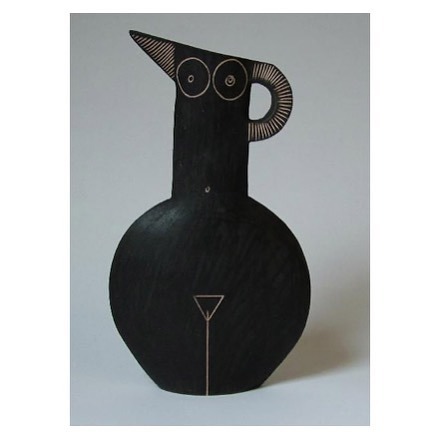
Jude Jelfs Jude Jelfs studied painting and sculpture at ‘Gloucestershire College’ in England and began making functional objects in the 1970s after meeting her husband, John, with whom she runs a studio 'The Cotswold Pottery'. Made of white earthenware clay (and sometimes porcelain or bronze), Jelfs’s figurative wares — which evoke the work of Alberto Giacometti, Pablo Picasso, and, perhaps most vividly, Henri Matisse - take the form of causally arched nude women. Her pottery and the process of making it also marks Jelfs’s return to her roots - a search for ways to combine ceramics with her fine-art background. Each piece begins with a drawing, which Jelfs translates into a paper pattern and uses to cut flat slabs of clay that she hand-builds into a jug. The exterior is painted with layers of a vitreous slip — a mix of clay and minerals, which add a subtle sheen to the finished surface — and drawn on with a needle. The seemingly flat, expressive results, which vary in size, position and aesthetic, celebrate the female form. #neonurchin #neonurchinblog #dedicatedtothethingswelove #suzyurchin #ollyurchin #art #music #photography #fashion #film #words #pictures #neon #urchin #pottery #ceramics #femaleform #fineart #potter #thecotswoldpottery #johnjelfs #judejelfs (at Cotswold: Bourton on the Water) https://www.instagram.com/p/B9OhHgNARuB/?igshid=zfqio5unhccf
#neonurchin#neonurchinblog#dedicatedtothethingswelove#suzyurchin#ollyurchin#art#music#photography#fashion#film#words#pictures#neon#urchin#pottery#ceramics#femaleform#fineart#potter#thecotswoldpottery#johnjelfs#judejelfs
0 notes
Link
Chris Jackson via Getty Images
The Duke and Duchess of Cambridge depart The Lindo Wing of St Mary’s Hostpial with newborn Prince George on July 23, 2013.
POOL New / Reuters
Close-up of Prince George as he departs the hospital with his parents.
REUTERS/Michael Middleton/The Duke and Duchess of Cambridge/Handout
The Duke and Duchess of Cambridge pose in the garden of the Middleton family home in Bucklebury, England with their son Prince George, cocker spaniel Lupo and Middleton family pet Tilly, in this undated photograph released Aug. 19, 2013.
REUTERS/John Stillwell/pool
Prince William carries Prince George as they arrive for his christening at St James’s Palace in London on Oct. 23, 2013.
Jason Bell/Camera Press/Redux
Family photo taken at Kensington Palace in March 2014.
Chris Jackson via Getty Images
The Duchess of Cambridge and Prince George arrive at Wellington Military Terminal in New Zealand for the first day of their royal tour on April 7, 2014.
REUTERS/Marty Melville/Pool
Catherine, Duchess of Cambridge, holds Prince George during a Plunket nurse and parents’ group event at Government House in Wellington on April 9, 2014.
POOL New / Reuters
Prince George at the Taronga Zoo on April 20, 2014, in Sydney, Australia.
REUTERS/John Stillwell/Pool
Portrait of Prince George taken July 2, 2014, ahead of his birthday at the Natural History Museum in London.
The Duke and Duchess of Cambridge/PA Wire via Getty Images.
Prince George in an official Christmas portrait, taken at Kensington Palace and released Dec. 2014.
Chris Jackson via Getty Images
Prince William and Prince George at St. Mary’s hospital after Princess Charlotte’s birth on May 2, 2015, in London, England.
REUTERS/Duchess of Cambridge/Handout via Reuters
Prince George and Princess Charlotte in a photo taken by the Duchess of Cambridge in mid-May 2015 at Anmer Hall in Norfolk.
Chris Jackson via Getty Images
Prince George waves from the window of Buckingham Palace as he watches the Trooping the Colour on June 13, 2015, in London, England.
Stefan Wermuth / Reuters
Prince William holds Prince George as he waves on the balcony at Buckingham Palace after the Trooping the Colour ceremony at Horse Guards Parade in central London on June 13, 2015.
POOL New / Reuters
Prince George leaves the Church of St. Mary Magdalene on the Sandringham Estate for the Christening of Princess Charlotte on July 5, 2015, in King’s Lynn, England.
Getty Images
The family Christmas card photo, taken in October 2015 by photographer Chris Jelf.
Handout/The Duchess of Cambridge
Prince George arrives for his first day at Westacre Montessori School in Norfolk on Jan. 6, 2016.
John Stillwell – WPA Pool/Getty Images
The royal family enjoys a short private skiing break on March 3, 2016, in the French Alps.
Pete Souza / via Kensington Palace
Prince George meets President Barack Obama and First Lady Michelle Obama at Kensington Palace on April 22.
Chris Jackson via Getty Images
The Duchess of Cambridge and Prince George attend the Gigaset Charity Polo Match on June 14, 2015, in Tetbury, England.
Matt Porteous/PA Wire
Official portrait released for Prince George’s third birthday, taken at Sandringham Estate in Norfolk in mid-July 2016.
Chris Jackson via Getty Images
Prince George with Prince William at a children’s party for military families during the Royal Tour of Canada on Sept. 29, 2016.
Chris Jackson via Getty Images
Prince George of Cambridge plays with bubbles at a children’s party for military families during the Royal Tour of Canada on Sep. 29, 2016.
Chris Jackson via Getty Images
Prince George waves as he leaves from Victoria Harbour to board a sea-plane on the final day of their Royal Tour of Canada on Oct. 1, 2016.
Photo by Samir Hussein/Pool/WireImage
Prince George of Cambridge looks out of the window of a sea plane as he departs Victoria on Oct. 1, 2016, in Victoria, Canada.
Samir Hussein/Samir Hussein/WireImage
Prince George of Cambridge attends Church on Christmas Day on Dec. 25, 2016, in Bucklebury, Berkshire.
Samir Hussein/Samir Hussein/WireImage
Prince George at the wedding Of Pippa Middleton and James Matthews at St Mark’s Church on May 20, 2017, in Englefield Green, England.
Samir Hussein/Samir Hussein/WireImage
Pageboy Prince George waves as he leaves the wedding Of Pippa Middleton and James Matthews at St Mark’s Church on May 20, 2017, in Englefield Green, England.
Samir Hussein via Getty Images
Prince George and his family look on from the balcony during the annual Trooping The Colour parade on June 17, 2017, in London, England.
Chris Jackson/Getty Images
A portrait taken in early June 2017 at Kensington Palace and released ahead of Prince George’s fourth birthday.
Getty Images
Catherine, Duchess of Cambridge and Prince George during a visit to the Royal International Air Tattoo in July 8, 2016, in Fairford, England.
Chris Jackson via Getty Images
Prince William speaks with Prince George of Cambridge as they arrive on the first day of their official visit to Poland on July 17, 2017.
Chris Jackson via Getty Images
Prince George views helicopter models before departing from Hamburg, Germany, airport on the last day of the family’s official visit to Poland and Germany on July 21, 2017.
Chris Jackson/Getty Images
Prince William with his son Prince George on his first day of school on September 7, 2017, in London, England. The picture was taken at Kensington Palace in London shortly before Prince George left for his first day of school at Thomas’s Battersea.
Getty Images/Chris Jackson
The royal family Christmas card for 2017.
Henry Nicholls / Reuters
Prince George and Princess Charlotte arrive at the Lindo Wing with their father, Prince William, after their mother gave birth to a son on April 23, 2018.
WPA Pool via Getty Images
Prince George leaves St George’s Chapel at Windsor Castle after the wedding of Prince Harry, Duke of Sussex and Meghan Markle on May 19, 2018, in Windsor, England.
Chris Jackson via Getty Images
Princess Charlotte, Savannah Phillips, and Prince George watch the flypast on the balcony of Buckingham Palace during Trooping The Colour on June 9, 2018, in London, England.
Samir Hussein via Getty Images
Prince George and Princess Charlotte run together during the Maserati Royal Charity Polo Trophy at Beaufort Park on June 10, 2018, in Gloucester, England.
Matt Holyoak/Camera Press
Official photograph taken after the christening of Prince Louis at Clarence House on July 9, 2017.
(function (d, s, id) { var js, fjs = d.getElementsByTagName(s)[0]; if (d.getElementById(id)) return; js = d.createElement(s); js.id = id; js.async = true; js.src = "http://connect.facebook.net/en_GB/sdk.js#xfbml=1&version=v2.10&appId=238320442863988"; fjs.parentNode.insertBefore(js, fjs); }(document, 'script', 'facebook-jssdk')); !function(f,b,e,v,n,t,s){if(f.fbq)return;n=f.fbq=function(){n.callMethod? n.callMethod.apply(n,arguments):n.queue.push(arguments)};if(!f._fbq)f._fbq=n; n.push=n;n.loaded=!0;n.version='2.0';n.queue=[];t=b.createElement(e);t.async=!0; t.src=v;s=b.getElementsByTagName(e)[0]; s.parentNode.insertBefore(t,s)}(window,document,'script','https://connect.facebook.net/en_US/fbevents.js');
fbq('init', '1112906175403201'); // Edition specific fbq('track', "PageView");// custom event(s) for bpages fbq('trackCustom', 'EntryPage', { "section_name": "Style & Beauty", "tags": [ "british-royal-family", "royal-families", "prince-george-of-cambridge" ], "ncid": "" });fbq('init', '10153394098876130'); // Partner Studio fbq('track', "PageView");
(function () { 'use strict';
document.addEventListener('DOMContentLoaded', function () { $('body').on('click', function(event) { fbq('track', "Click", data); }); }); }) ();
Source link
The post 40 Totally Aww-Worthy Photos Of Prince George appeared first on MySourceSpot.
0 notes
Text
InShape Feature – Medical Giant Stryker Mind & Body Great Adventure Challenge Test
This slideshow requires JavaScript.
Stryker, a global medical technology leader and Starlight Children’s Foundation Great Adventure Challenge corporate partner, will once again pit mind and body against Mother Nature in the Royal National Park event on October 14, 2017.
So, just who will win the battle, Stryker or Mother Nature?
The Great Adventure Challenge
Encouraging other organisations to take part in the Great Adventure Challenge, Stryker aims to help sick children, such as Jack, who suffers Deep-Brain Arteriovenous Malformation (AVM), and their families have a better quality of life. Defined as exciting, demanding and inspiring, the event sees teams battle the elements. Also, they use problem-solving skills to negotiate their way around obstacles.
The annual event, in its tenth year, has given over 38,400 sick children and their families access to Starlight’s programs. These programs include Captain Starlight, Starlight Express Rooms and Vans, and Rocket Rounds (ward visits), which run in New South Wales, and other states.
Stryker’s Great Adventure Challenge Experience
Stryker Training Specialist, Claire Jelfs, participating in the event for the third time, explained what’s involved in the corporate challenge.
“For fairness and intrigue, the exact course remains hidden until the morning of the event. Typically, the course is 60km-80k m and includes mountain biking, trail running, kayaking and coasteering.”
“In addition to the physical challenges, there’s mystery tasks and navigation which means the mind also gets a good workout. Then there’s the fundraising element of the event which is extremely rewarding,” she said.
Why Did Stryker Choose the Adventure Challenge?
Apart from offering a diverse array of innovative reconstructive, medical and surgical medical technologies, Stryker also is driven to make healthcare better. As such, the company develop neurotechnology and spine products, so people with injuries can lead more satisfying lives.
Ms Jelfs explains why Stryker keeps coming back to compete year-after-year. She also defines why other companies should put the Great Adventure Challenge on their annual corporate calendar.
“Stryker has participated in eight out of the ten events. We’ve won the past three years, and we’ve also won the fundraising component a few times too. So, you could say we’ve come back to defend our title.”
“Jokes aside, we participate because we love helping sick kids and the team building element of the event. This year we have five teams competing. Warehouse, operations, finance, HR and marketing staff are among the participants. Of which, there’s also a good mix of seasoned staff to brand new employees taking part in the corporate challenge for the very first time,” Ms Jelfs said.
How Does the Great Adventure Challenge Help Starlight?
Each month there are over 3,500 visits by children and their families to the Starlight Express Room at The Children’s Hospital at Westmead, Sydney Children’s Hospital Randwick and John Hunter Children’s Hospital. Captain Starlight visits a further 1,700 children on these hospital wards who are too sick to leave their beds. This initiative is part of a program known as Rocket Rounds. Travelling in Starlight Express Vans, Captain Starlight also visits regional hospitals to visit additional children.
Striving to meet growing demand for Starlight’s programs and the opening of a new SER at Sydney Children’s Hospital Randwick in Q4, each participating team is encouraged to fundraise $10,000. This funding helps Starlight reach it’s New South Wales Great Adventure Challenge overall fundraising goal of $200,000.
Registration closes on Friday 1 September 2017, so lace up those sneakers’. To register your team or for more information about the GAC, please contact Starlight NSW Partnerships Executive, Kathleen Tan by email [email protected] or phone (02) 8425 5975.
About the Starlight Children’s Foundation
Starlight Children’s Foundation brightens the lives of seriously ill children and their families by replacing pain, fear and stress with fun, joy and laughter. Since its establishment in 1988, Starlight has expanded becoming the broadest reaching and most trusted Australian children’s charity. There is now a Starlight Express Room in every children’s hospital in the country and 150 Captain Starlights nationwide. In 2017, Starlight will open four new Starlight Express Rooms nationally. Supporting sick kids regardless of illness, injury or age, Starlight’s hospital programs are uniquely Australian. Last year, Starlight granted 525 life-changing wishes and delivered more than 425,000 Starlight experiences to sick kids and their families.
About Stryker
Based on performance, innovation and integrity, Stryker is a global leader in the development of orthopaedic products that help make replacement joint act and feel like a natural body part. Making orthopaedic surgery and recovery faster with greater results, Stryker, a Fortune 500 company, produces more than 57,000 products. Founded in 1941, this company exist in more than 100 countries around the world and seek to get more people moving, just like Susan.
Medical Giant Stryker Mind & Body Great Adventure Challenge Test InShape Feature - Medical Giant Stryker Mind & Body Great Adventure Challenge Test Stryker, a global medical technology leader and Starlight Children's Foundation Great Adventure Challenge corporate partner, will once again pit mind and body against Mother Nature in the Royal National Park event on October 14, 2017.
#Global Medial Technology Leader#Great Adventure Challenge#Starlight Children&039;s Foundation#Stryker
0 notes
Text
Tweeted
How can technology support the post-trade industry? Join Owen Jelf, @RossKMcGill, Demi Derem, Mark John and Mark Kerns at #TheNetworkForum http://pic.twitter.com/viJikxjsx6
— The Network Forum (@TheNetworkForum) June 16, 2017
0 notes
Photo
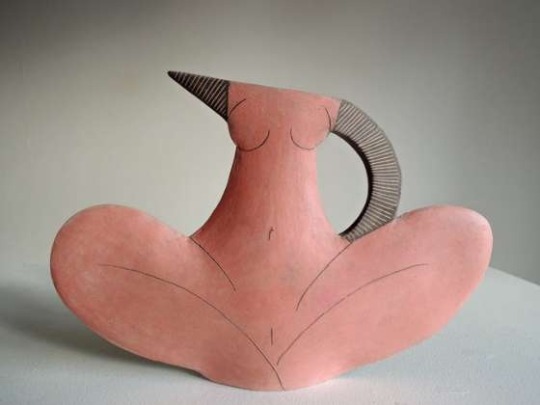

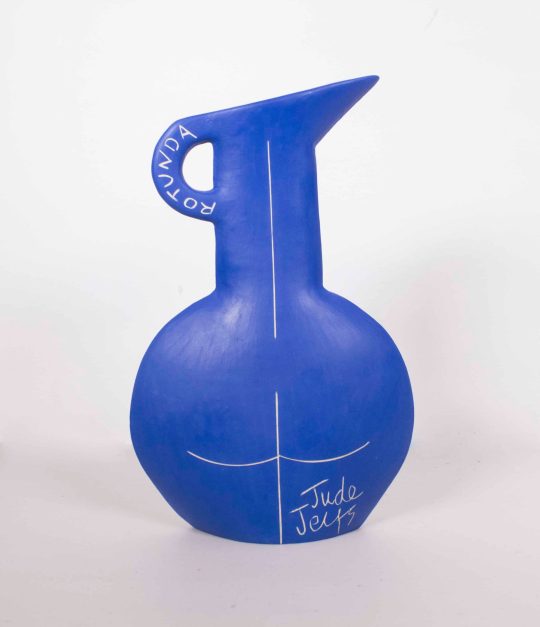
Ceramic artist Jude Jelfs (UK)
Jelfs studied painting and sculpture at Gloucestershire College in England, and began making functional objects in the 1970s after meeting her husband, John, with whom she runs a studio, The Cotswold Pottery, in an enchanting English village called Bourton-on-the-Water. Made of white earthenware clay (and sometimes porcelain or bronze), Jelfs’s figurative wares—which evoke the work of Alberto Giacometti, Pablo Picasso, and, perhaps most vividly, Henri Matisse—take the form of causally arched nude women. “What I hope to achieve are drawings in space that have a three-dimensional element to them,” Jelfs told me in an email. “There’s always been anthropomorphism in pottery,” she continued (the “belly” of a jug, the “neck of a vase, the “foot” of a bowl), so referencing the human body in a pottery jug is a logical progression—albeit a playful one.
https://www.surfacemag.com/.../jude-jelfs-pottery-nude.../
12 notes
·
View notes
Text
Sark's Golden Boy
Sark’s Golden Boy
The RYA’s Powerboat Racing Department have announced that John Guille from the Channel Island of Sark has won the ‘Contribution to Powerboat Racing Marine from Industry Supplier’ award for 2016.
The awards, launched in 2015, were set out to recognise excellence in the sport.
Jeni Jelf, RYA Powerboat Racing Manager commented,
We have been staggered by the calibre of entries we received for these…
View On WordPress
0 notes
Photo
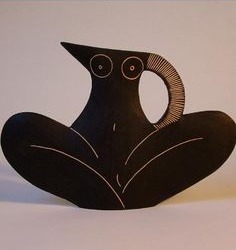
"Sitting Pretty" by Jude Jelfs
19 notes
·
View notes
Photo

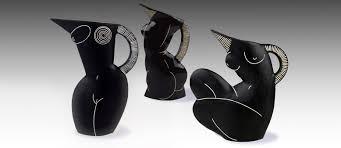
Ceramic artist Jude Jelfs (UK)
Jelfs studied painting and sculpture at Gloucestershire College in England, and began making functional objects in the 1970s after meeting her husband, John, with whom she runs a studio, The Cotswold Pottery, in an enchanting English village called Bourton-on-the-Water. Made of white earthenware clay (and sometimes porcelain or bronze), Jelfs’s figurative wares—which evoke the work of Alberto Giacometti, Pablo Picasso, and, perhaps most vividly, Henri Matisse—take the form of causally arched nude women. “What I hope to achieve are drawings in space that have a three-dimensional element to them,” Jelfs told me in an email. “There’s always been anthropomorphism in pottery,” she continued (the “belly” of a jug, the “neck of a vase, the “foot” of a bowl), so referencing the human body in a pottery jug is a logical progression—albeit a playful one.
https://www.surfacemag.com/.../jude-jelfs-pottery-nude.../
4 notes
·
View notes
Photo

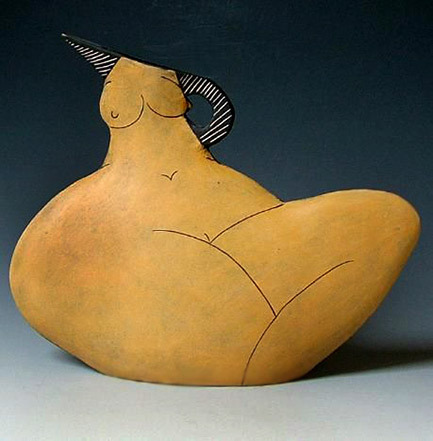
Ceramic artist Jude Jelfs (UK)
Jelfs studied painting and sculpture at Gloucestershire College in England, and began making functional objects in the 1970s after meeting her husband, John, with whom she runs a studio, The Cotswold Pottery, in an enchanting English village called Bourton-on-the-Water. Made of white earthenware clay (and sometimes porcelain or bronze), Jelfs’s figurative wares—which evoke the work of Alberto Giacometti, Pablo Picasso, and, perhaps most vividly, Henri Matisse—take the form of causally arched nude women. “What I hope to achieve are drawings in space that have a three-dimensional element to them,” Jelfs told me in an email. “There’s always been anthropomorphism in pottery,” she continued (the “belly” of a jug, the “neck of a vase, the “foot” of a bowl), so referencing the human body in a pottery jug is a logical progression—albeit a playful one.
https://www.surfacemag.com/.../jude-jelfs-pottery-nude.../
4 notes
·
View notes
Photo
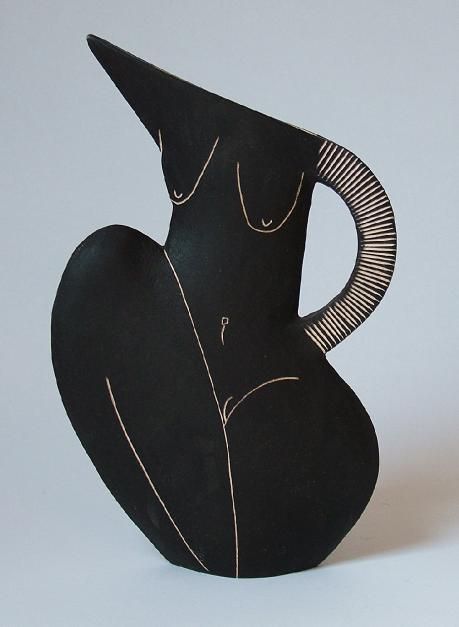

Ceramic artist Jude Jelfs (UK)
Jelfs studied painting and sculpture at Gloucestershire College in England, and began making functional objects in the 1970s after meeting her husband, John, with whom she runs a studio, The Cotswold Pottery, in an enchanting English village called Bourton-on-the-Water. Made of white earthenware clay (and sometimes porcelain or bronze), Jelfs’s figurative wares—which evoke the work of Alberto Giacometti, Pablo Picasso, and, perhaps most vividly, Henri Matisse—take the form of causally arched nude women. “What I hope to achieve are drawings in space that have a three-dimensional element to them,” Jelfs told me in an email. “There’s always been anthropomorphism in pottery,” she continued (the “belly” of a jug, the “neck of a vase, the “foot” of a bowl), so referencing the human body in a pottery jug is a logical progression—albeit a playful one.
https://www.surfacemag.com/.../jude-jelfs-pottery-nude.../
3 notes
·
View notes